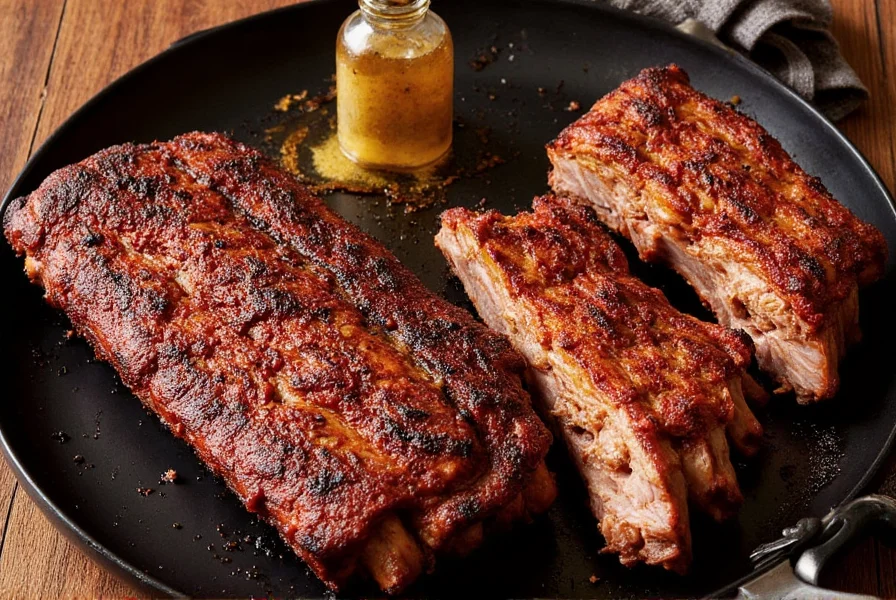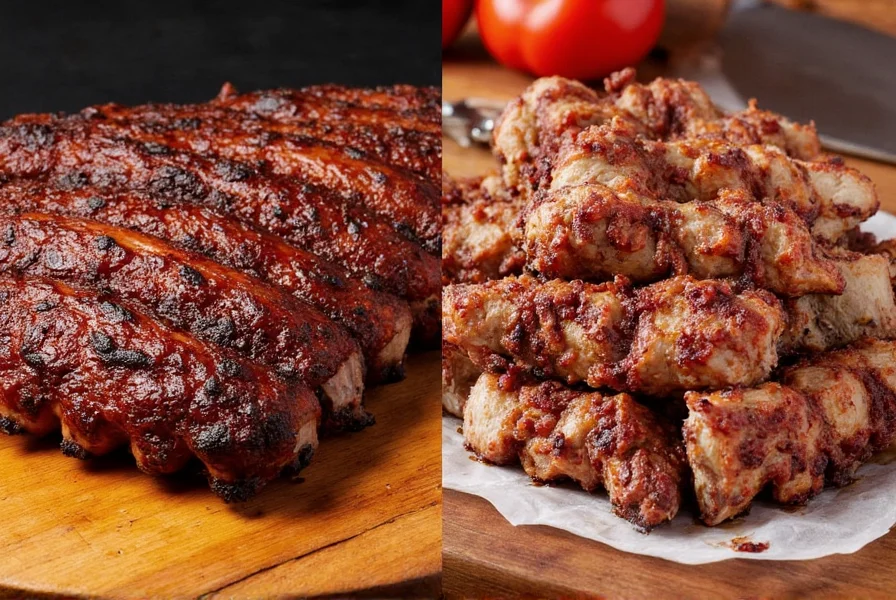Baby Back vs Spare Ribs: A Smoky Showdown of Flavor & Fun
Table of Contents
- Introduction: Why Rib Differences Matter
- What’s What: Baby Back vs Spare Ribs
- Visual Comparison Table
- Meat & Fat Content: Taste, Texture, Tenderness
- Cooking Methods That Bring Out the Best
- Spice It Up! Rubs for Each Cut
- Buying Guide: Choosing Your Perfect Rack
- Frequently Asked Questions
- Conclusion: Which One Wins Your Heart?
Introduction: Why Rib Differences Matter
Ribs. Glorious, meaty, fall-off-the-bone (or not quite!) bundles of joy. But if you’ve ever stood in front of a grill or butcher case wondering whether to pick up baby backs or spares, you're not alone.
The difference between baby back and spare ribs isn't just about looks — it's about texture, flavor, cooking time, and how they take to spice. Whether you’re hosting a backyard BBQ or prepping for a rib-eating competition (yes, those exist!), knowing which rib is right can make all the difference.
What’s What: Baby Back vs Spare Ribs
Let’s start with the basics — literally.
- Baby Back Ribs: Also known as loin-back ribs, these come from the top of the rib cage, near the spine, and below the loin muscle.
- Spare Ribs: These are cut from the lower belly side of the rib cage, closer to where bacon comes from.
While both come from pigs, their location on the animal gives them very different textures and flavors. Think of baby backs as the elegant cousin who always shows up in a blazer — leaner, tender, and pricier. Spare ribs are more like your laid-back uncle — fattier, bold in flavor, and often cheaper.

Visual Comparison Table
| Feature | Baby Back Ribs | Spare Ribs |
|---|---|---|
| Location | Along the spine, under the loin | Lower chest area, near belly |
| Fat Content | Leaner | More marbled and fatty |
| Bone Size | Curved, smaller bones | Flatter, larger bones |
| Tenderness | Tender and juicy | Firmer, chewier |
| Cooking Time | Shorter (3–4 hours) | Longer (5–6 hours) |
| Average Price per Pound | Higher | Lower |
| Best For | Quick cooks, delicate palates | Low-and-slow lovers, big flavor fans |
Meat & Fat Content: Taste, Texture, Tenderness
If tenderness had a poster child in the rib world, baby backs would be it. Their leaner meat makes them easier to chew and more approachable for newcomers to smoked meats.
Spare ribs, though less tender straight out of the oven, bring serious flavor thanks to that extra fat. When cooked low and slow, that fat renders into mouthwatering juiciness and adds richness to every bite.
- Baby Back Pros: Tender, easy to eat, quick cook time
- Baby Back Cons: Can dry out if overcooked
- Spare Pros: Rich flavor, moist when cooked right
- Spare Cons: Tough if rushed, requires patience
Cooking Methods That Bring Out the Best
Both cuts shine when smoked or slow-cooked, but each responds differently to heat and time.
For Baby Back Ribs
- Smoking: Ideal at 225°F for 3–4 hours
- Oven Baking: Wrap in foil and bake at 275°F for 2.5–3 hours
- Grilling: Use indirect heat and finish with sauce
For Spare Ribs
- Low and Slow Smoking: 225°F for 5–6 hours
- Wet Wrapping: Foil with apple juice or broth halfway through
- Grill & Glaze: Finish with sticky glaze or tangy mop sauce
Spice It Up! Rubs for Each Cut
No matter which ribs you choose, a killer rub will elevate your game. Here are some go-to blends based on rib type:
Baby Back Rub (Mild & Balanced)
- 1 tbsp brown sugar
- 1 tsp paprika
- ½ tsp garlic powder
- ½ tsp onion powder
- ¼ tsp cayenne (optional)
- Salt & black pepper to taste
This mix enhances the natural sweetness without overpowering the delicate meat.
Spare Rib Rub (Bold & Smoky)
- 2 tbsp dark brown sugar
- 1 tbsp smoked paprika
- 1 tsp chili powder
- ½ tsp cumin
- ½ tsp mustard powder
- Salt & black pepper to taste
The smokiness complements the fattier meat and stands up to long cooking times.
Buying Guide: Choosing Your Perfect Rack
Shopping for ribs can be confusing. Let’s break it down so you never end up with a sad rack again!
Factors to Consider
- Size: Look for racks with even bone spacing and good meat coverage.
- Color: Fresh ribs should be pinkish-red, not gray or overly dark.
- Firmness: Meat should feel firm to the touch, not slimy or mushy.
- Marbling: More marbling means more flavor — great for spares!
Recommended Products
- Kingsford Original Charcoal
- Features: Even burn, classic smoky aroma
- Use Case: Low-and-slow smokers, backyard grills
- Target Audience: Serious grillers and home enthusiasts
- Occasion: Weekend BBQs, rib competitions
- Weber Smokey Mountain Cooker
- Features: Excellent temperature control, durable steel construction
- Use Case: Long smoke sessions, brisket and rib prep
- Target Audience: Pro-level hobbyists and pitmasters
- Occasion: Events, weekend warriors, family gatherings
- Morton Coarse Kosher Salt
- Features: Great for dry brining and rubs
- Use Case: Prepping ribs before rub application
- Target Audience: Chefs and home cooks alike
- Occasion: Everyday grilling or gourmet prep
Frequently Asked Questions
Are baby back ribs really from baby pigs?
Nope! They’re named for their location on the pig — “back near the baby” portion of the loin — not because they come from young animals.
Can I use the same rub for both types?
You can, but adjusting the spices to suit each cut’s profile will yield better results. Baby backs do best with sweeter, lighter blends; spares crave bold, smoky notes.
Which has more meat?
Contrary to appearances, baby backs have more meat per bone than spares — but spares pack a punch in flavor due to their fat content.
Conclusion: Which One Wins Your Heart?
In the end, choosing between baby back and spare ribs is like picking your favorite ice cream flavor — it depends on your mood, your company, and how much time you’ve got.

Want something tender, fast, and fuss-free? Go baby back. Looking for deep flavor, rich fat, and a longer, slower cook? Spare ribs are your jam. Either way, you’re winning — just don’t forget the napkins.










 浙公网安备
33010002000092号
浙公网安备
33010002000092号 浙B2-20120091-4
浙B2-20120091-4